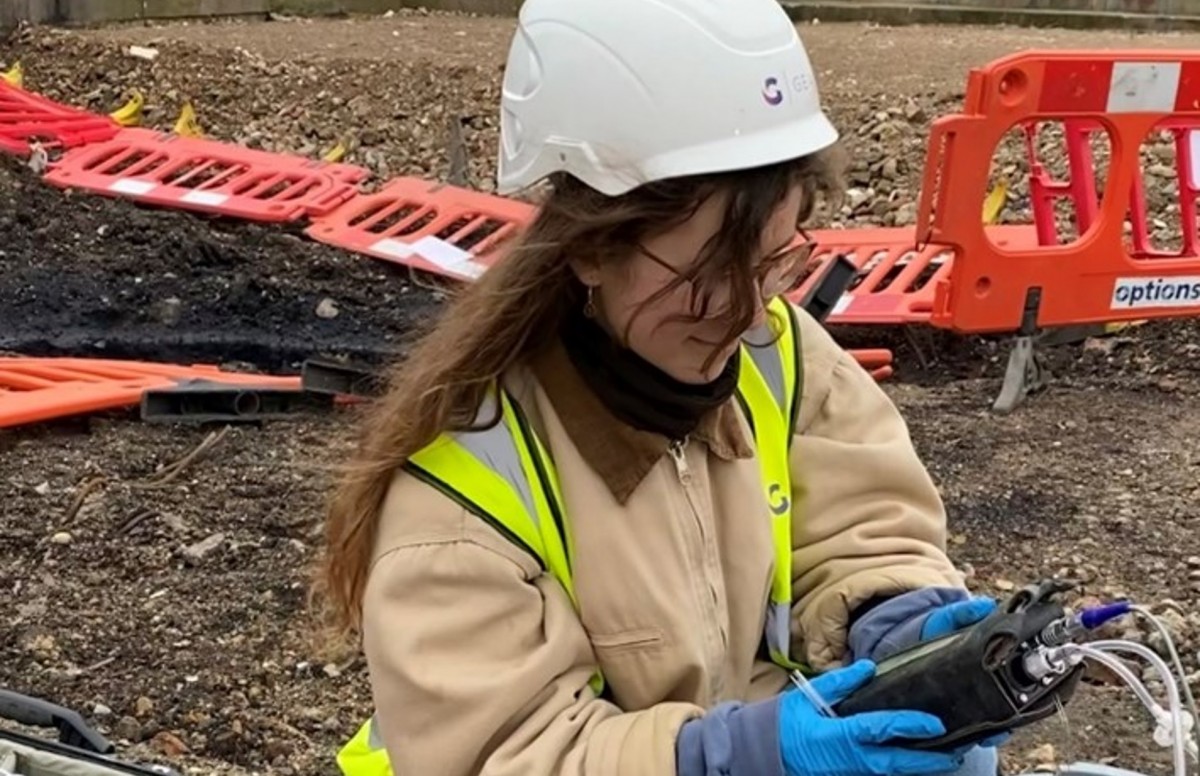The Geotheta Diaries
The Geotheta Diaries
Blog Article
The Ultimate Guide To Geotheta
Table of ContentsThe smart Trick of Geotheta That Nobody is DiscussingHow Geotheta can Save You Time, Stress, and Money.Rumored Buzz on GeothetaFacts About Geotheta RevealedGet This Report on Geotheta

They perform site investigations, gather examples, perform lab examinations, and assess data to assess the suitability of the ground for building and construction tasks - Tailings Engineer. Based on their findings, geotechnical engineers supply referrals for foundation design, slope stability, maintaining frameworks, and reduction of geotechnical threats. They collaborate with other experts, such as designers, structural engineers, and building groups, to make certain that geotechnical factors to consider are incorporated into the overall job style and implementation
By examining the habits and properties of dirt and rock, they can recognize potential geotechnical threats such as landslides, dirt negotiation, or slope instability. Their experience assists stop failures or mishaps that might jeopardize lives and residential property. Here are some detailed duties and responsibilities of a geotechnical designer: Website Investigation: Geotechnical engineers conduct site examinations to collect data on subsurface conditions.
They interpret the data to comprehend the buildings and actions of the dirt and rock, including their toughness, leaks in the structure, compaction characteristics, and groundwater conditions. Geotechnical Analysis and Layout: Geotechnical engineers analyze the data collected throughout website examinations to examine the security and suitability of the site for building jobs. They carry out geotechnical computations and modeling to assess variables such as birthing capacity, settlement, slope stability, side planet pressures, and groundwater flow.
The 15-Second Trick For Geotheta
Structure Style: Geotechnical engineers play an essential function in designing structures that can safely sustain the intended framework. They evaluate the dirt problems and load demands to identify the appropriate structure type, such as superficial foundations (e.g., grounds), deep foundations (e.g (https://www.metal-archives.com/users/geotheta)., heaps), or specialized strategies like dirt enhancement. They take into consideration variables such as negotiation limitations, bearing capacity, and soil-structure interaction to create optimum foundation designs
They assess building and construction plans, monitor website activities, and carry out area examinations to validate that the style suggestions are complied with. If unforeseen geotechnical concerns develop, they evaluate the situation and give suggestions for remediation or changes to the style. Threat Evaluation and Reduction: Geotechnical designers assess geotechnical threats and dangers connected with the task site, such as landslides, liquefaction, or dirt erosion.

Collaboration and Interaction: Geotechnical designers work closely with other specialists associated with a job, such as engineers, architectural designers, and construction groups. Reliable communication and cooperation are vital to incorporate geotechnical considerations into the general job style and building process. Geotechnical engineers give technical experience, response queries, and make certain that geotechnical requirements are met.
Geotheta Fundamentals Explained
Here are some types of geotechnical designers: Foundation Designer: Foundation engineers concentrate on creating and evaluating foundations for structures. They examine the soil conditions, load needs, and website attributes to establish the most suitable foundation type and style, such as superficial foundations, deep structures, or specialized methods like pile foundations.
They examine the factors affecting slope stability, such as dirt residential properties, groundwater conditions, and slope geometry, and create strategies to stop slope failures and alleviate risks. Earthquake Engineer: Quake engineers specialize in assessing and creating structures to stand up to seismic pressures. They evaluate the seismic threat of a website, evaluate dirt liquefaction possibility, and develop seismic design criteria to make sure the security and durability of structures throughout quakes.
They do field testing, accumulate examples, and examine the gathered data to define the soil residential properties, geologic formations, and groundwater conditions at a website. Geotechnical Instrumentation Engineer: Geotechnical instrumentation designers concentrate on tracking and measuring the actions of dirt, rock, and structures. They mount and preserve instrumentation systems that monitor variables such as dirt settlement, groundwater degrees, slope activities, and architectural displacements to examine performance and give early cautions of prospective concerns.
Top Guidelines Of Geotheta
They carry out tests such as triaxial examinations, consolidation tests, direct shear tests, and leaks in the structure tests to collect data for geotechnical analysis and layout. Geosynthetics Engineer: Geosynthetics designers focus on the layout and application of geosynthetic materials, such as geotextiles, geogrids, and geomembranes. They make use of these materials to enhance soil stability, enhance slopes, supply water drainage services, and control disintegration.
They tend to be investigative people, which means they're intellectual, introspective, and investigative. They wonder, systematic, rational, analytical, and rational. Several of them are also social, implying they're kind, generous, participating, client, caring, practical, empathetic, skillful, and friendly. Does this noise like you? Take our totally free career test to discover if geotechnical engineer is one of your top job suits.
In the office environment, geotechnical designers make use of specialized software devices to execute estimations, produce designs, and analyze information. They prepare records, evaluation project specs, interact with clients and staff member, and coordinate job activities. The office setup supplies a conducive setting for study, analysis, and partnership with other experts associated with the task.
The Facts About Geotheta Uncovered
They frequently check out project websites to conduct website examinations, examine geotechnical problems, and gather information for analysis. These sees involve taking a trip to various areas, often in remote or tough terrains. Geotechnical designers news may do soil sampling, conduct tests, and display construction tasks to make certain that the geotechnical aspects of the job are being implemented properly.
Geotechnical designers also operate in specialized geotechnical research laboratories. In these facilities, they conduct experiments, do examinations on soil and rock samples, and assess the engineering buildings of the materials. Geotechnical laboratory engineers function extensively in these atmospheres, taking care of screening equipment, operating instruments, and tape-recording information. They work together with various other research laboratory personnel to make sure exact and reliable testing outcomes.
Report this page